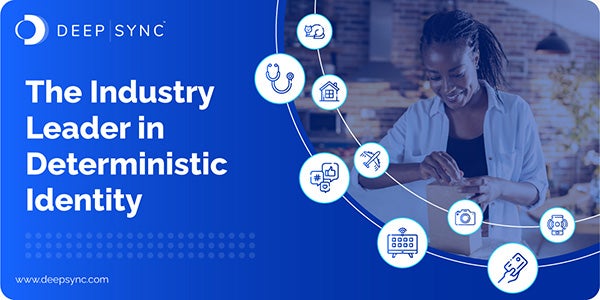In a world where privacy regulations are tightening and third-party cookies are increasingly unreliable, first-party data has emerged as a cornerstone of modern marketing strategy.
Yet, despite its clear advantages – greater accuracy, compliance and customer insight – many enterprise brands have yet to fully unlock its potential.
Why does the gap between the promise of first-party data and its real-world impact persist?
Organizational silos and fragmentation
For many brands, the biggest challenge is fragmentation. Data lives in different systems, teams operate in silos and customer data remains unresolved across channels. Even with customer data platforms (CDPs) in place, achieving enterprisewide identity resolution can be a struggle, as not all CDPs specialize in this area. Without the underlying data assets to supplement first-party data, their ability to stitch disparate data sets together is limited.
A truly unified view of the customer requires more than technology; it demands strategic coordination across departments and expertise beyond data science alone.
Gaps in data literacy and ownership
Another common roadblock is a lack of data literacy across the organization. Data remains underused when teams don’t know how to access, interpret or act on it. Successful brands are beginning to invest in the right talent, build data fluency and establish clear governance frameworks. But many are still catching up.
Ownership also plays a key role. Without clear accountability, first-party data strategies stall before they start.
The trap of “more data” without strategy
Collecting data for data’s sake is a pitfall. Without a clear strategy and embedded expertise in how to use it, more data only compounds complexity and risk. Brands must prioritize purpose over volume, asking, “What can we collect?” and “Why does this data matter to our customer relationships?”
Intentionality makes the difference between data as noise and data as insight.
Trust is the foundation
Even though first-party data is more compliant by design, it’s not immune to trust issues. Consumers are increasingly selective about the brands with which they share their information. Transparency, value exchange and ethical stewardship are now nonnegotiables.
First-party data isn’t just about compliance; it’s about consent and care. Trust must be earned continually through every interaction, not just promised in a privacy policy.
Mastery requires a strategic shift
First-party data strategy is not a one-time implementation; it’s a continuous, cross-functional effort. To move from fragmented efforts to true data mastery, brands should:
- Anchor in truth: Align your data strategy with customer needs and business goals.
- Build with the right partners: Collaborate with partners that prioritize long-term value over short-term wins and focus on unlocking the value of your first-party data.
- Invest intentionally in technology: Avoid shiny tools in favor of infrastructure that enables agility and scalability.
- Take control: Establish internal ownership and accountability to ensure your data strategy drives impact.
Turning data into lasting relationships
Ultimately, this is more than technology or compliance; it’s about how brands build lasting relationships. When used strategically, first-party data becomes a powerful engine for customer understanding, personalization and loyalty. It enables brands to shift from broadcasting to listening, from transactions to meaningful interactions.
Brands that master first-party data won’t just survive the privacy-first world; they’ll lead it. The opportunity to experience greater accuracy, compliance and customer insight exists within your first-party data today.
The gold mine is real. The time to dig in is now.
For more articles featuring Paul Turner, click here.












